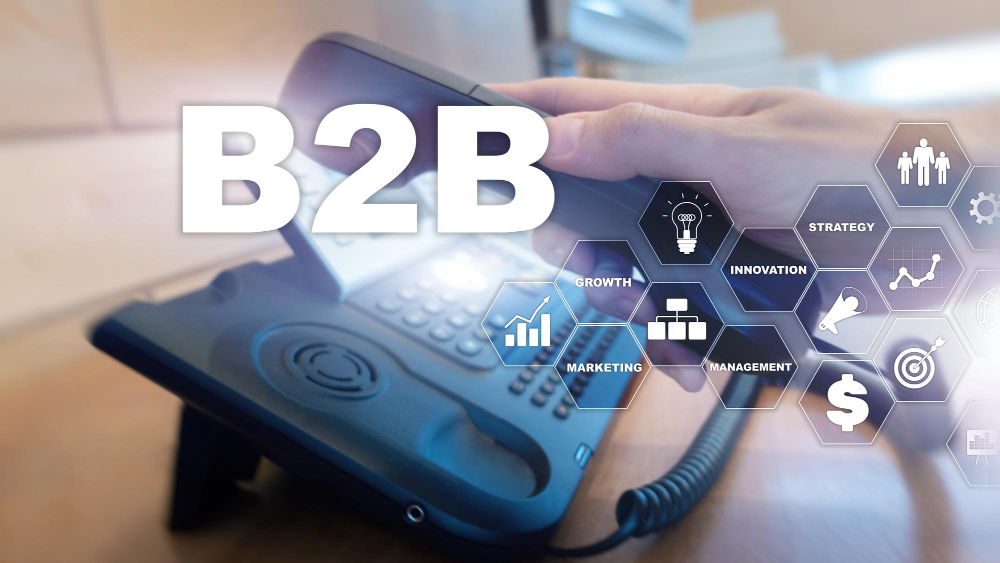The business world is like a speeding train, and B2B marketing is all about grabbing hold and not letting go. What worked last year might not cut it today, and that’s why staying on top of the latest trends is key.
Think of it this way: new marketing channels are like undiscovered shortcuts to connect with potential clients, build strong relationships, and ultimately grow your business. By using these innovative platforms, you can get your name out there, grab your audience’s attention in a meaningful way, and see your profits soar.
In 2024, some game-changing marketing channels are emerging that are perfect for B2B businesses. From super-charged content marketing tactics to cutting-edge social media strategies, these channels are redefining how companies connect with their target audience.
This blog will explore the top 10 B2B marketing channels you must focus on this year. Buckle up and get ready to learn how to stay ahead of the curve and make your marketing efforts truly impactful in this ever-changing business landscape!
1# Content Marketing
Content marketing plays a crucial role in B2B. It’s all about creating and sharing valuable content to attract and engage a specific audience. This strategy helps businesses establish authority, build trust, and nurture relationships with potential clients.
In B2B marketing, the most effective types of content include blogs, whitepapers, case studies, and eBooks. Blogs provide regular updates and insights, helping to keep your audience informed and engaged. Whitepapers offer in-depth analysis and detailed information, making them ideal for showcasing expertise.
Case studies highlight real-world applications and successes, providing proof of your product or service’s value. eBooks offer comprehensive guides on industry topics, making them valuable resources for your audience.
To create engaging and valuable content, start by understanding your audience’s needs and pain points. Focus on delivering solutions and insights that are directly relevant to them. Use clear, concise language and avoid jargon that might confuse readers. Include visuals, such as images and infographics, to make your content more appealing.
Consistency is key—regularly publish new content to keep your audience engaged and coming back for more. Lastly, always encourage feedback and interaction to build a stronger connection with your audience.
2# Social Media Marketing
Social media marketing is vital for B2B. Platforms like LinkedIn and Twitter are particularly powerful. LinkedIn is the go-to for professional networking, helping businesses connect with industry leaders and potential clients. Twitter offers a dynamic way to share updates, engage in conversations, and monitor industry trends.
To leverage social media effectively, start by building a strong presence on these platforms. Share valuable content regularly, such as industry news, insights, and company updates. Engage with your audience by responding to comments, participating in discussions, and using hashtags to increase visibility.
Successful B2B social media campaigns often focus on storytelling and thought leadership. For example, IBM’s “#ThinkMarketing” campaign on LinkedIn shares insights and innovations, positioning them as industry leaders. Another example is HubSpot’s use of Twitter for real-time engagement during events, boosting their visibility and interaction with their audience.
3# Email Marketing
Email marketing remains a cornerstone of B2B strategies. Personalized and targeted email campaigns are essential for engaging your audience and driving conversions.
Start by building a robust email list. Use sign-up forms on your website, offer valuable resources in exchange for email addresses, and segment your list based on factors like industry, job role, and engagement level. Nurture these leads by sending relevant content that addresses their specific needs and pain points.
When designing and sending emails, focus on clear, compelling subject lines and concise, valuable content. Use a mix of text and visuals to keep your emails engaging. Personalize your messages by addressing recipients by name and tailoring content to their interests. Regularly analyze your email campaigns to understand what works and what doesn’t, making adjustments as needed to improve performance.
4# Search Engine Optimization (SEO)
SEO is essential for driving organic traffic and improving visibility for B2B websites. By optimizing your website, you can ensure that potential clients find you easily through search engines.
Key SEO strategies for B2B include keyword research, on-page optimization, and link building. Start with keyword research to identify the terms your audience is searching for. Use these keywords strategically in your website content, meta descriptions, and headers.
On-page optimization involves improving your site’s structure, ensuring it is mobile-friendly, and speeding up load times. Link building focuses on acquiring high-quality backlinks from reputable sites, which can significantly boost your site’s authority and ranking.
Local SEO is also crucial, especially if you target specific markets. Optimize your website for local search terms and create a Google My Business profile to enhance your local presence. This helps attract clients from your targeted geographic area.
5# Pay-Per-Click (PPC) Advertising
PPC advertising is highly effective for B2B lead generation. It allows you to target specific audiences and achieve immediate visibility.
Google Ads and LinkedIn Ads are the best platforms for B2B PPC campaigns. Google Ads offers broad reach and detailed targeting options, while LinkedIn Ads lets you target professionals based on industry, job title, and company size.
To create compelling ad copy, focus on clear and concise messages that highlight your unique selling points. Use strong calls to action to encourage clicks. Optimize your PPC performance by continuously testing different ad variations, monitoring your results, and adjusting your bids and targeting based on performance data.
6# Account-Based Marketing (ABM)
ABM is a strategic approach in B2B marketing that focuses on targeting specific high-value accounts rather than a broad audience. It’s about creating personalized campaigns for key accounts to build strong relationships and drive significant business results.
To implement a successful ABM strategy, start by identifying your target accounts. Collaborate with your sales team to choose the accounts that offer the most value. Next, create personalized content and campaigns tailored to each account’s specific needs and challenges. Engage with these accounts through multiple channels, such as email, social media, and direct mail.
Several tools and technologies can support your ABM efforts. Platforms like HubSpot, Marketo, and Terminus offer features to help you manage and execute your ABM campaigns effectively. These tools provide insights into account engagement, helping you refine your strategy and improve your results over time.
7# Influencer Marketing
Influencer marketing is gaining traction in the B2B world. Influencers, with their established credibility and large followings, can help amplify your message, build trust, and reach a wider audience.
To identify and collaborate with industry influencers, start by researching key figures in your niche who have a strong online presence and engage regularly with your target audience. Look for influencers who share content related to your industry and have a reputation for expertise and thought leadership.
Collaborating with influencers can take various forms, such as guest blog posts, social media takeovers, co-hosted webinars, or product reviews. Ensure the partnership is mutually beneficial and aligns with your marketing goals.
Measuring the impact of influencer marketing campaigns involves tracking key metrics like engagement rates, reach, website traffic, and lead generation. Use analytics tools to monitor these metrics and assess the ROI of your influencer partnerships. This data will help you refine your strategy and make informed decisions for future campaigns.
8# Webinars and Virtual Events
Webinars and virtual events have become essential for B2B engagement, offering a platform for companies to connect with their audience, showcase expertise, and generate leads.
Hosting webinars and virtual events provides numerous advantages. They allow you to reach a global audience, offer valuable insights, and foster interactive discussions. These events can position your brand as a thought leader and create lasting impressions.
To plan and promote successful webinars, start by choosing relevant and timely topics that address your audience’s pain points. Select knowledgeable speakers and create engaging content. Promote the event through email marketing, social media, and your website to maximize attendance.
Engaging virtual event formats include live Q&A sessions, panel discussions, and interactive workshops. For example, Salesforce hosts successful virtual events like Dreamforce, featuring keynote speakers, breakout sessions, and networking opportunities that keep participants engaged and informed.
By leveraging webinars and virtual events, you can enhance your B2B marketing strategy, build stronger relationships with your audience, and drive business growth.
9# Video Marketing
Video marketing is becoming increasingly popular in B2B marketing due to its ability to effectively engage audiences and convey complex information. Videos can capture attention quickly and provide a more dynamic and memorable experience than text-based content.
Several types of videos resonate well with B2B audiences. Product demos showcase your product’s features and benefits, helping potential customers understand its value. Testimonials provide social proof and build trust by featuring satisfied clients sharing their positive experiences. Educational content, such as how-to videos and webinars, positions your brand as an industry expert and provides valuable information to your audience.
To distribute and promote your video content effectively, leverage multiple channels. Share your videos on your website, social media platforms, and email campaigns. Optimize videos for SEO by including relevant keywords in titles and descriptions. Use video hosting platforms like YouTube and Vimeo to reach a broader audience. Consider using paid advertising on social media and search engines to increase visibility and engagement.
10# Podcasts
Podcasts are rising as a valuable B2B marketing tool, offering a convenient way for busy professionals to consume content on the go. They provide a platform for in-depth discussions and can help establish your brand as a thought leader in your industry.
Creating a successful B2B podcast starts with selecting topics that interest your target audience. Focus on industry trends, challenges, and insights. Plan a series of episodes and maintain a consistent schedule to keep your audience engaged. Invest in good-quality recording equipment to ensure clear audio.
Marketing your podcast involves promoting it across various channels. Share episodes on your website, social media, and email newsletters. Submit your podcast to directories like Apple Podcasts, Spotify, and Google Podcasts to reach a wider audience. Encourage listeners to leave reviews and share episodes with their networks.
Featuring guest experts and industry leaders on your podcast can add value and credibility. Guests bring new perspectives and can attract their followers to your podcast, expanding your reach. By consistently providing valuable content and engaging discussions, your podcast can become a key component of your B2B marketing strategy.
Conclusion
Embracing a multi-channel approach is crucial for maximizing reach and engagement. Start experimenting with these channels to stay ahead in the competitive B2B market.
Share your experiences or questions about B2B marketing channels with us. Contact us for additional resources or a free consultation to help implement these strategies effectively.






